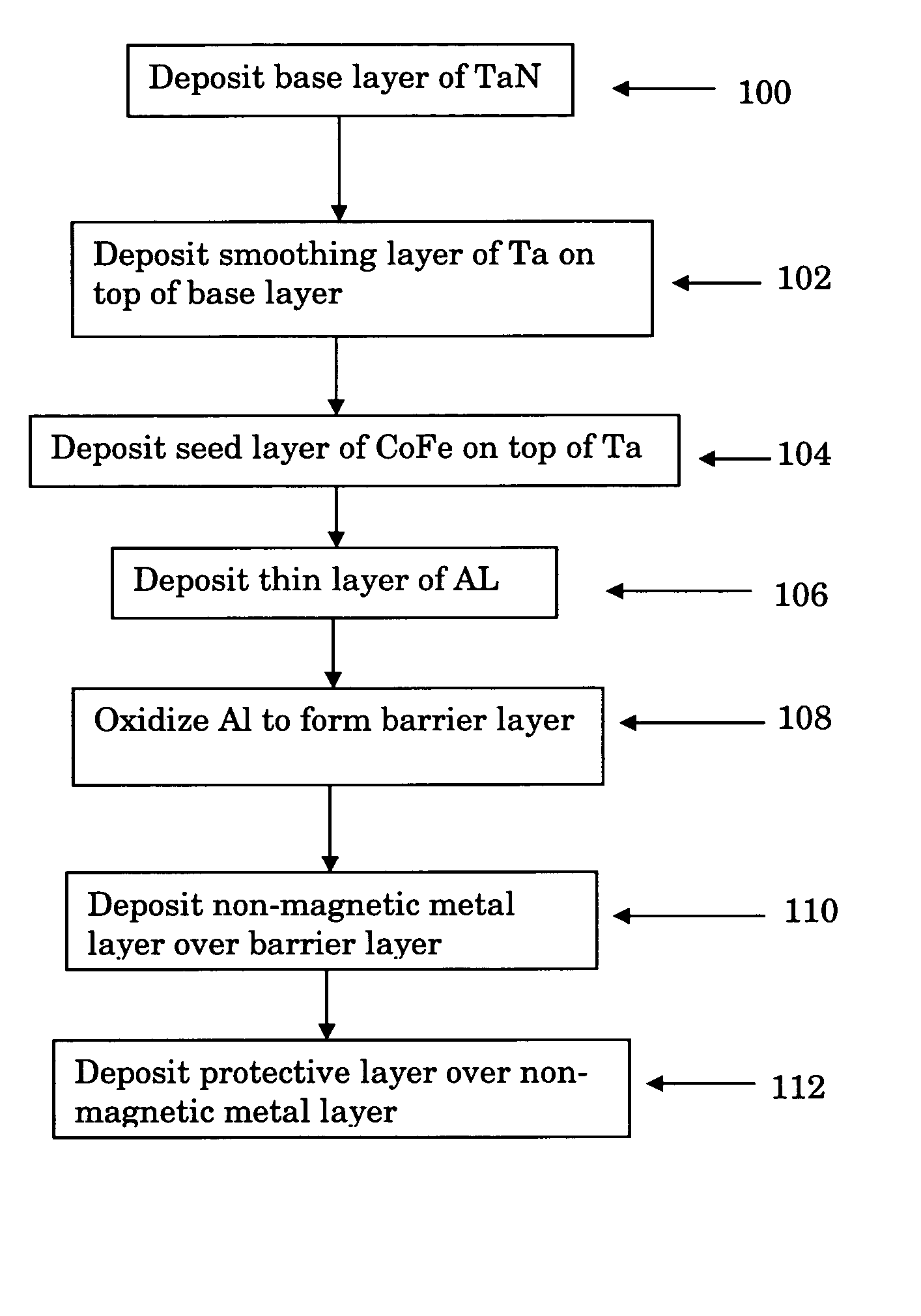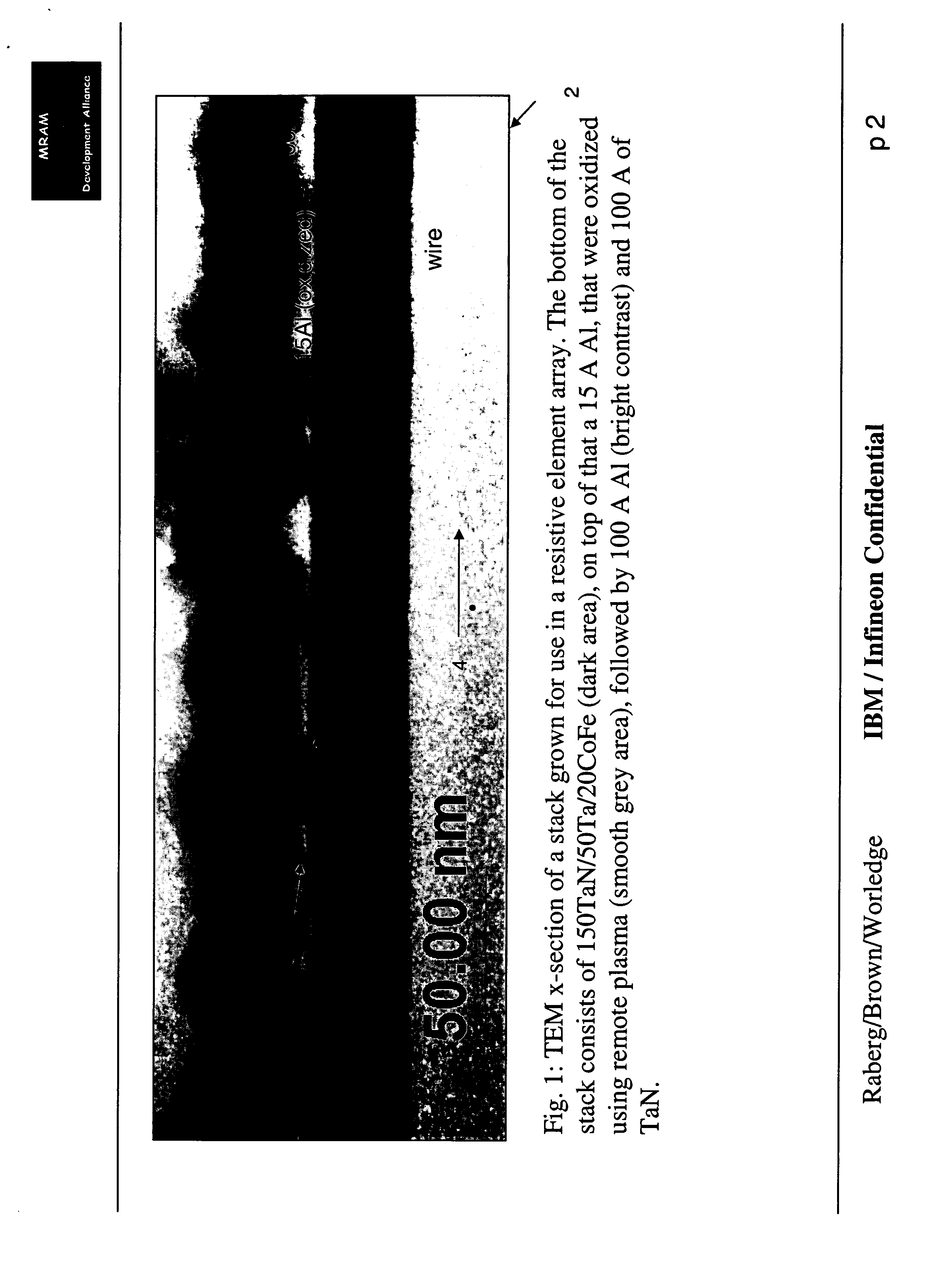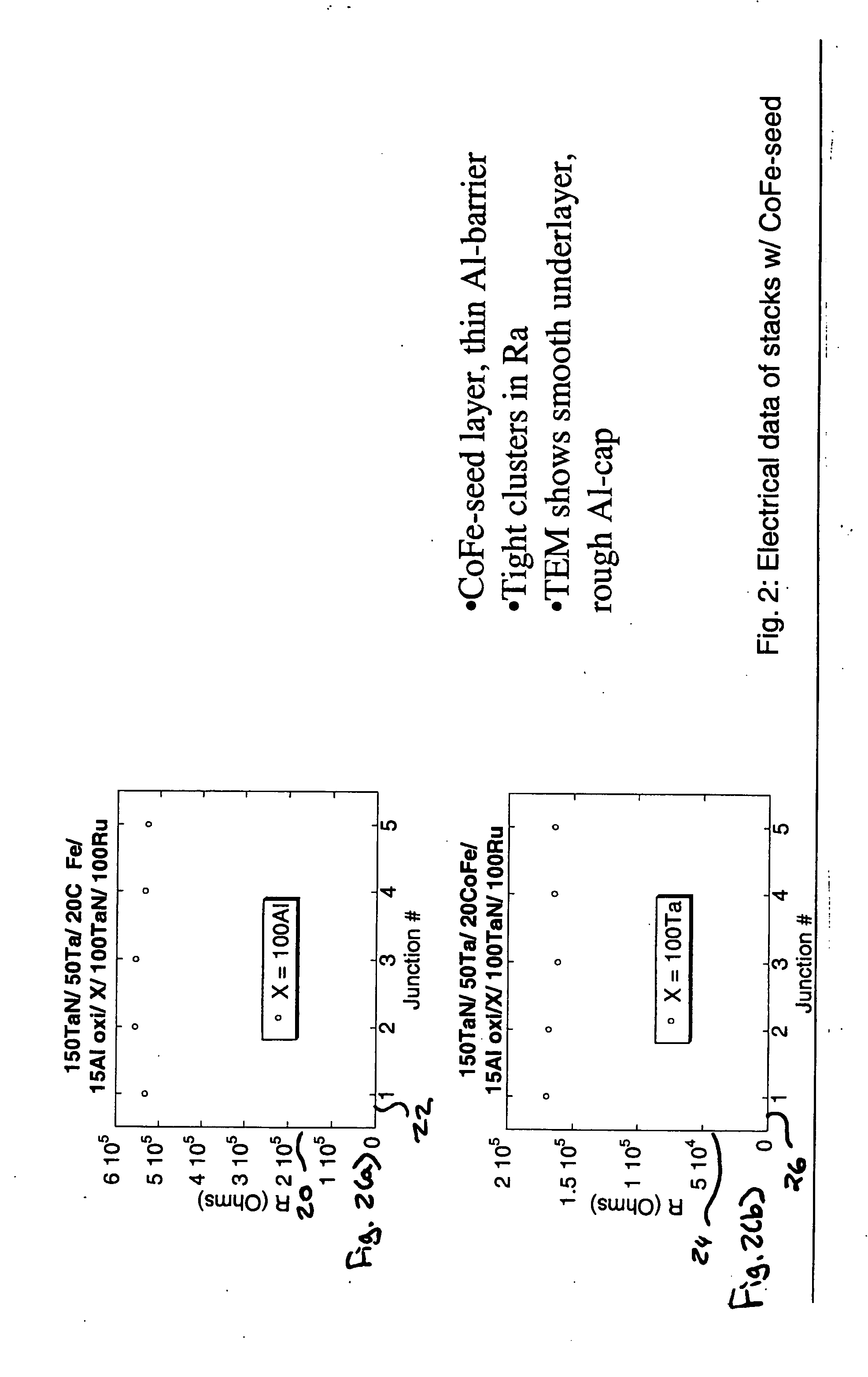Small, scalable resistive element and method of manufacturing
- Summary
- Abstract
- Description
- Claims
- Application Information
AI Technical Summary
Benefits of technology
Problems solved by technology
Method used
Image
Examples
Embodiment Construction
[0012] Referring now to FIG. 1, a representation of a resistive stack 2 manufactured in accordance with a preferred embodiment of the present invention is shown. A picture of a resistive stack such as shown in FIG. 1 may be obtained in practice by viewing the resistive stack with a transition electron microscope (TEM). The resistive stack 2 is constructed upon a metal line or layer 4. As discussed in more detail below, the metal line 4 provides one electrical contact point to the resistive stack 2. A Tantalum Nitride (TaN) layer 6 is deposited upon the metal layer 4 to form a base layer 6 of the resistive stack 2. The TaN layer 6 is depicted in FIG. 1 as being 150 Angstroms (A) thick. However, the thickness of the base layer 6 is not critical as long as it does not deviate to the point that the functionality of the resistive stack 2 is substantially affected. In order to provide a smoother surface for deposition of a seed layer, a thin smoothing layer of Tantalum (Ta) 8 is deposited...
PUM
 Login to View More
Login to View More Abstract
Description
Claims
Application Information
 Login to View More
Login to View More - R&D
- Intellectual Property
- Life Sciences
- Materials
- Tech Scout
- Unparalleled Data Quality
- Higher Quality Content
- 60% Fewer Hallucinations
Browse by: Latest US Patents, China's latest patents, Technical Efficacy Thesaurus, Application Domain, Technology Topic, Popular Technical Reports.
© 2025 PatSnap. All rights reserved.Legal|Privacy policy|Modern Slavery Act Transparency Statement|Sitemap|About US| Contact US: help@patsnap.com



